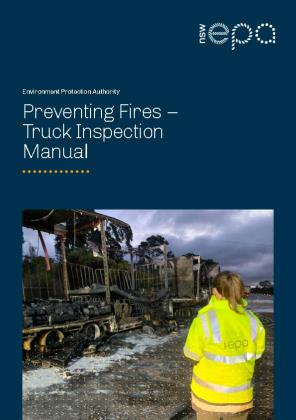Guidance to help prepare a Transport Emergency Response Plan
A Transport Emergency Response Plan is mandatory for placard loads of dangerous goods.
We have produced a new practical draft guide to help road tank vehicles and prime movers transporting liquid and other dangerous goods develop their plans.
The guidance document is now available on our page Preparing for transport incidents.
The EPA (along with SafeWork NSW) regulates the transport of dangerous goods in NSW. Dangerous goods are substances and objects that pose acute risks to people, property and the environment due to their chemical or physical characteristics.
- When transporting dangerous goods you need training and may need a licence for both the driver and the vehicle
- If you are transporting waste, you may also need a waste transporter’s licence.
All licence holders are listed in the dangerous goods public register. See the public register terms of use.
You must also observe certain requirements to ensure the goods are transported safely. There are penalties for not following these rules.
Preventing fires – truck inspection manual
More than 200 trucks catch fire every year in NSW with many of these fires being preventable. These fires endanger lives, and can cause water, land and air pollution, significant traffic delays, and often result in the destruction of the truck and its cargo.
Find out more about the Preventing fires – truck inspection manual.
Identifying dangerous goods
To determine if a product is a dangerous good, you can
- check its label
- check its shipping or transport documents
- check the product's safety data sheet (previously called the materials safety data sheet)
- check with the manufacturer or supplier of the product
- check if the product is listed in the dangerous goods list in the ADG Code and is not excluded by a special provision detailed in column 7 of that list
- have the products tested to the classification criteria of the ADG Code or UN Manual of Tests and Criteria
Dangerous goods transport regulation
The NSW legislation implements international and national frameworks about dangerous goods. The EPA and SafeWork NSW are jointly appointed as competent authorities for the land transport of dangerous goods in NSW. The EPA regulates the road and rail transport of dangerous goods under this Act while SafeWork NSW regulates activities prior to transport, including correct classification, packaging and labelling. This Act is jointly administered by the Minister for Fair Trading and the Minister for Environment and Heritage.
The EPA and SafeWork NSW work together with other regulators for road and rail transport, including the National Heavy Vehicle Regulator, the Office of the National Rail Safety Regulator and NSW Police; to collectively ensure that dangerous goods transport is regulated in NSW.
We carry out regular audits of dangerous goods transport to ensure compliance with the legislation.
In NSW, dangerous goods transport is administered under the
- Dangerous Goods (Road and Rail Transport) Act 2008
- Dangerous Goods (Road and Rail Transport) Regulation 2022
This legislation controls the transport of all dangerous goods except
- Class 1 (explosives), regulated under the Explosives Act 2003 and administered by Safework NSW
- Class 7 (radioactive substances), regulated under the Radiation Control Act 1990 and administered by the EPA
Dangerous goods are classified under the Australian Dangerous Goods Code (ADG Code) and the United Nations Manual of Tests and Criteria.
Dangerous Goods (Road and Rail Transport) Regulation 2022
The Dangerous Goods (Road and Rail Transport) Regulation 2022 commenced on 19 August 2022. The Regulation replaces the Dangerous Goods (Road and Rail Transport) Regulation 2014. The Regulation represents best practice regulation consistent with national Transport of Dangerous Goods Model Laws.
The new Regulation includes changes to strengthen safety, maintenance, inspection, packaging approval, and incident notification requirements including
- heavy tank trailers must have an electronic roll stability system (RSS) fitted, maintained and operational, legislating the Determination previously made by the EPA
- prohibited routes specified in NSW Road Rule 300-2 are mirrored, enabling the EPA to regulate vehicles transporting dangerous goods (including placard loads) on prohibited routes, including tunnels
- prime contractors must notify the EPA within one hour of becoming aware of an incident resulting in a dangerous situation – drivers must still notify incidents to emergency services and the prime contractor ‘as soon as practicable’ but do not need to notify the EPA
- the EPA or SafeWork NSW, as competent authorities, may authorise a qualified engineer, NATA accredited laboratory, NSW government agency or statutory body to approve packaging designs on their behalf
- a person undertaking the maintenance, testing or inspection of a licensed dangerous goods vehicle must maintain the vehicle in accordance with the requirements in the Australian Dangerous Goods Code
- language and layout changes to better align the Regulation with the national Transport of Dangerous Goods Model Laws
- licence and other fees will be adjusted for inflation from 2023-24.


